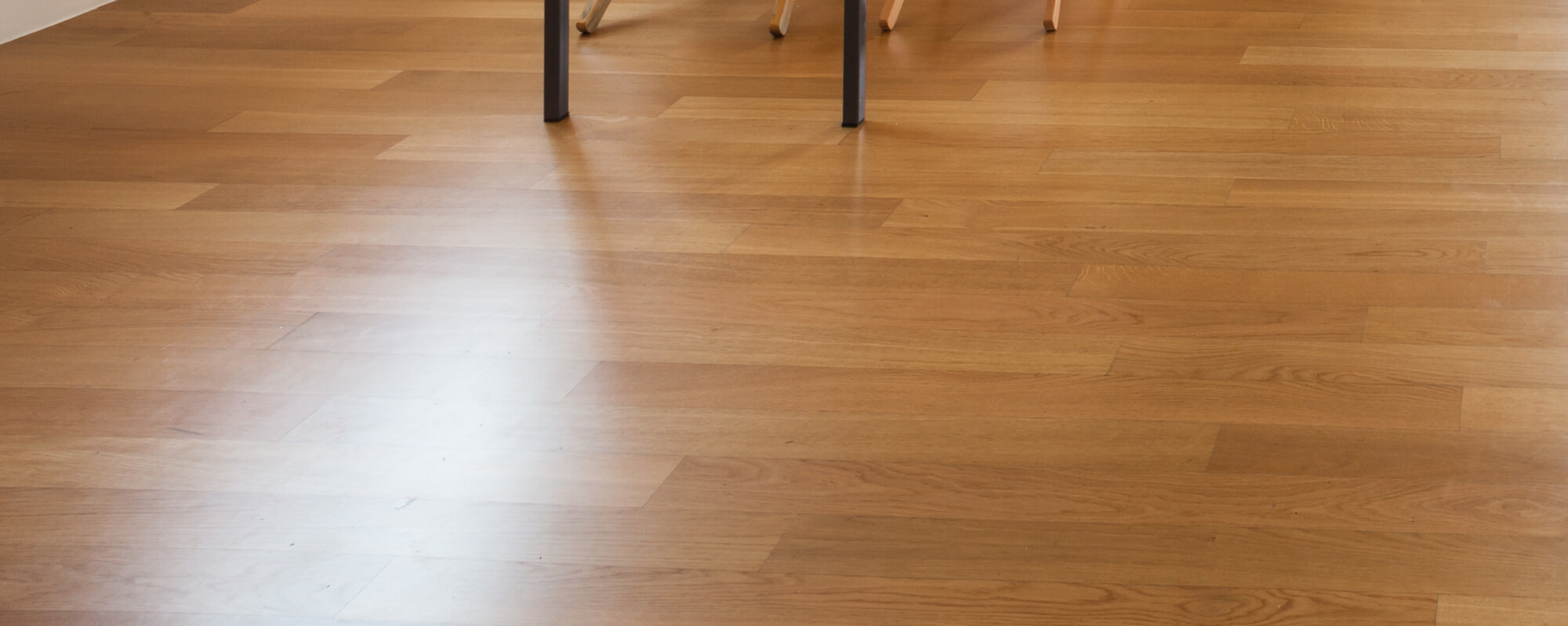Q: Does the harvest and production of wood flooring harm the environment?
A: No! Twice as much wood grows each year than is harvested in the U.S., ensuring our supply of hardwood is sustainable for future generations. American forests are 90 percent larger now than they were 50 years ago. Manufacturers conscientiously select individual trees for harvest, encouraging natural renewal of the forest. They use every part of the log as lumber or byproducts. The finished products are reusable, recyclable, and biodegradable.
Q: Are wood floors expensive?
A: Hardwood flooring is available in wide range of competitive prices. Because it lasts decades, hardwood also offers superior value over other flooring options. The National Wood Flooring Association and real estate agents agree that homes with hardwood hold their value better, sell faster, and bring higher prices.
Q: What species and color should I choose?
A: It depends on your personal preference. The most popular option is red oak in a natural finish. Darker colors create a more formal or traditional feel. Lighter shades usually fit best in country, casual, or contemporary interiors.
See descriptions and images of some popular wood species
Q: Which rooms can I install wood flooring in my home?
A: As a rule, wood flooring can be installed in any room except a full bath. Because of potential moisture problems, solid hardwood is not recommended for below-grade level, such as a basement, where engineered products are a better choice.
Q: What is the difference between engineered wood and solid wood flooring?
A: Engineered wood flooring – available in planks or strips – is manufactured by using a cross-directional laminated construction in 3 to 5 layers of wood; only the top layer is premium hardwood. Because of its construction, these products don’t expand and contract with seasonal temperature and humidity changes as much as natural wood
Solid wood products aren’t layered. They’re created form solid pieces of wood and are available in planks, strips, or parquet.
Q: What is the difference between prefinished and unfinished wood flooring?
A: Tough and durable, prefinished flooring is treated at the factory with several coats of UV-cured polyurethane or aluminum oxide. These products cut installation time to as little as one day, while also eliminating the dust and odor of on-site sanding and finishing
For unfinished products, raw materials are installed on-site. Then they are sanded, stained (if desired), and finished with 3 or 4 coats of polyurethane. Installation and finishing takes 3 to 5 days, depending the project
See the product types page for more detailed descriptions
Q: Which installation method is best?
A: That depends. Applegate uses four different installation methods: nail, staple, glue, and floating. The best method depends on the selected product, location, and subfloor, so talk to a flooring specialist about your specific situation.
Q: Which type of floors work best for radiant floor heating?
A: We suggest an engineered product using a floating installation. Oak is an ideal species for this purpose, while we usually discourage maple and pecan for radiant floor heating.
Q: Are wood floors hard to maintain?
A: Not at all! With some common sense care your floor can outlast you.
See our floor care guide for maintenance tips.
Q: I see visible cracks between boards. Why are they separating?
A: Seasonal changes in humidity can cause separation. When the weather gets dry, the wood loses moisture and the boards shrink. Lighter colored woods show cracks more than darker tones. Likewise, wider boards will show more separation than narrower boards. Most cracks are simply seasonal and will typically close up naturally when humidity returns. To add moisture during dry periods:
- boiling a pan of water
- turning off the bathroom exhaust fan after a shower
- opening the dishwasher after the rinse cycle
- placing a pan of water in the furnace fan compartment
- hanging wet laundry to dry in the basement
- or installing a humidifier to maintain a steady moisture level in the house
Manufacturers recommend maintaining a steady relative humidity level of 40-45 percent.
Q: What can I do about pet stains?
A: Minor pet stains will be barely perceptible after a light sanding and, if applicable, stain. Area rugs or carpet over major problem areas offer a temporary solution. Occasionally, removal and repair will be your only option.
Q: What can I do about dents?
A: The only way to get out dents and scratches is to refinish. So, try to prevent dents by removing high heels, trimming pet nails, and applying felt protectors to furniture legs. Also, consider a satin finish instead of a glossy finish, as it will make dents and scratches less noticeable.
Q: Is hardwood flooring a good choice for someone with allergies?
A: Yes! Wood flooring is very easy to keep clean. Unlike carpeting, it wonât trap animal dander, dust, pollen, or mold.


